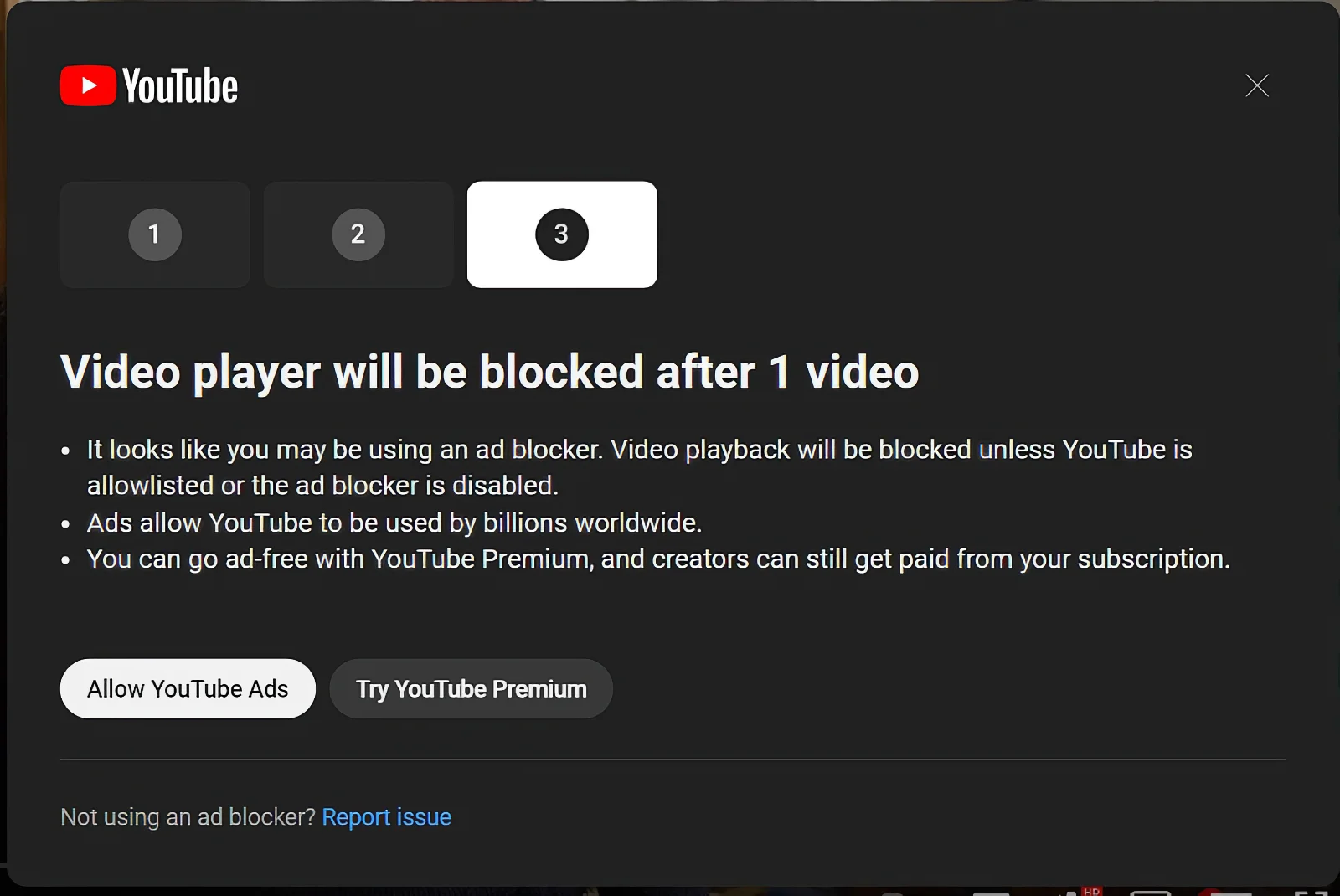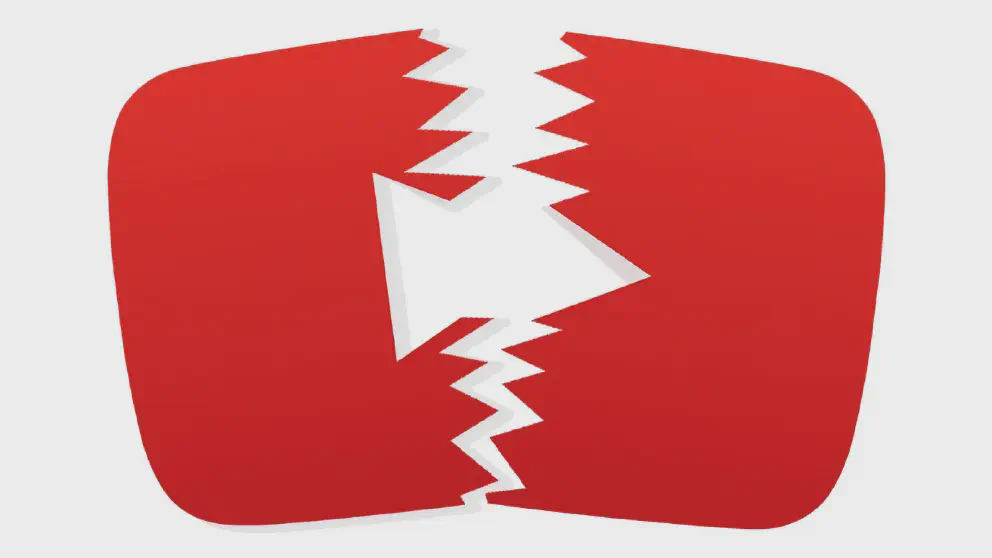In September 2023 alone, YouTube received 31.9 billion unique visitors on their website. That’s almost 4 times the amount of people on the planet. This makes YouTube the second most visited website on earth after YouTube’s parent, Google.
However, despite the popularity and the amount of revenue Google and YouTube collectively make, YouTube has made changes on their website and apps to be worse than before. It was done on purpose. Why?
The Changes

- Ad Blockers detection: YouTube Web now detects you are using an ad blocker and comes out with a notice on why you should switch off ad blockers
- Annoying Timer: If you dismiss the notice, it will later come out with a timer for that close button to ensure that you read the notice. It also makes watching videos a little bit more annoying
- Missing features: You used to have a 1:1 feature set on the web and the iOS/iPad. No more, some sections like your watch history are missing on the iPad and iPhone. Expect a more basic version of the iOS app will be YouTube’s future.
The Why
Why is Google purposely making its app worse on purpose? Money of course. It’s no secret that YouTube is hawking YouTube Premium to users to give that “premium” feel. Currently, there are around 28 million YouTube Premium subscribers, which sounds like a lot, until you realize that there are 2.7 billion active users on YouTube. Which makes YouTube Premium uptake around 1% of the platform. Of course, YouTube wants to increase these numbers.
Furthermore, while YouTube ads revenue is formidable at $29.2 billion in 2022, it’s tiny compared to Google’s ad revenue of over $162 billion. It’s quite obvious that Alphabet (parent of Google and YouTube) plans to expand the revenue base of its 2nd biggest holdings.
And despite what people say about ads, those ads are the lifeblood of YouTube’s business model. To attract content creators on their platform, you need to pay them well. To pay the content creators well, you need to generate ad revenue. To generate more ad revenue, you need to have more ads running on the platform. So YouTube’s war against ad-blockers is a logical one.
The only criticism in this is that, unlike cable or TV, YouTube wields more power in user data than the platforms of yesteryears. We used to only track age groups, geographic location, maybe income, and racial profiles, but now we can almost know exactly how each user thinks. This degree of granularity is unprecedented.
Conclusion
There’s a sound business reason why YouTube wanted more ads on the platform and for better or worse, ads and commerce are the major forces powering the internet right now. Without those two, the internet wouldn’t be as advanced as it is right now.
To see if this will help or hinder YouTube in the long run, we have to wait to find out.
Plug
Support this free website by visiting my Amazon affiliate links. Any purchase you make will give me a cut without any extra cost to you
| Base | Pro | |
|---|---|---|
| iPhones | iPhone 16 / iPhone 16 Plus - (Amazon) | iPhone 17 Pro / iPhone 17 Pro Max - (Amazon) |
| iPhone Accessories | Find them at Amazon | |
| Watch | Apple Watch SE (Amazon) / Apple Watch Series 11 | Apple Watch Ultra 3 (Amazon) |
| AirPods | AirPods 4 (Amazon) | AirPods Pro 3 (Amazon) / AirPods Max (Amazon) |
| iPad | iPad 10 (Amazon) / iPad Mini (Amazon) | iPad Air M3 (Amazon) / iPad Pro M5 (Amazon) |
| Laptops | MacBook Air M3 (Amazon) | MacBook Pro M5 (Amazon) / MacBook Pro M4 Pro/ M4 Max (Amazon) |
| Desktop | Mac Mini M4 / M4 Pro (Amazon) / iMac M4 (Amazon) | Mac Studio / Mac Pro |
| Displays | Studio Display (Amazon) | Pro Display XDR (Amazon) |
Other Ecosystem Items
